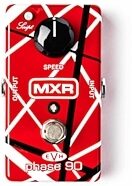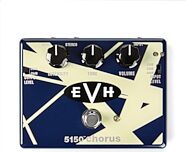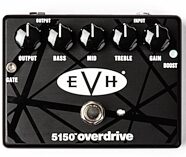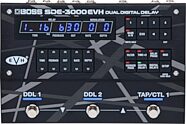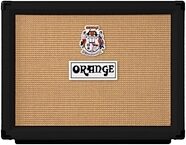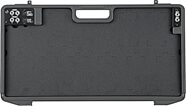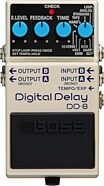Line 6 MS10 Liqua Flange Pedal
No longer available at zZounds
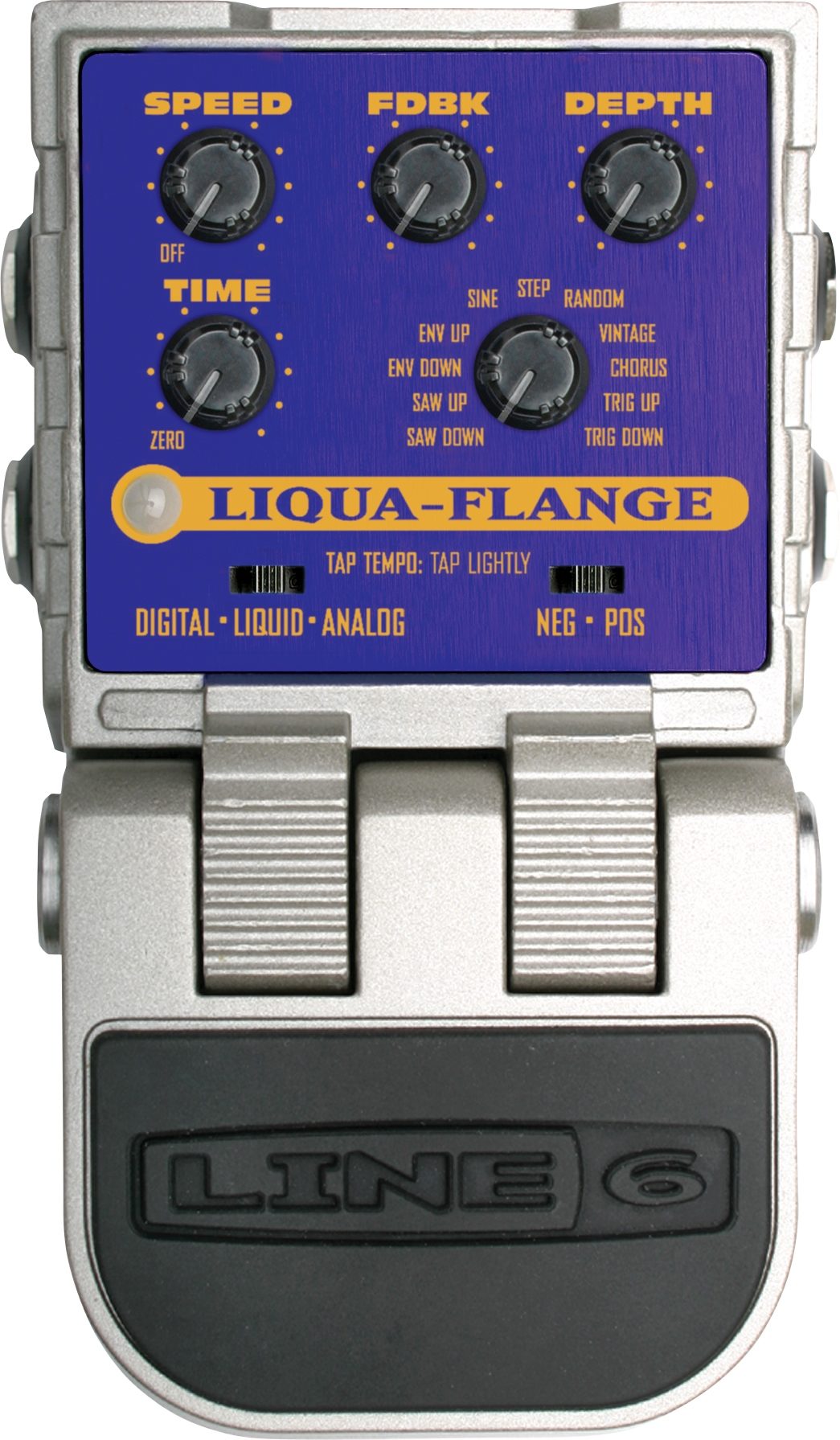

zZounds Gear Experts Say...
Get sweeping studio flange with this stompbox. It features selectable digital, liquid, and analog models.
Overview
Burn down the house with the new ToneCore Liqua-Flange. Liqua-Flange has selectable Digital, Liquid, and Analog models all with pass through zero settings that will make your guitar sound like it's coming down from the sky. This pedal sized miracle delivers classic studio flange sounds and some that haven't ever been heard. Don't wait, start your journey to flanged enlightenment now!
Model Switch - This switch is used to select three distinctly different types:
Digital - The wet signal has a flat frequency response.
Liquid - Has dual delay lines with the modulation offset from each other.
Analog - The wet signal has the frequency response of classic analog devices.
Polarity Switch - Allows you to select Negative or Positive phase for the delay line. When summed together with the original signal, changing the phase can result in some very dramatic effects.
Wave Select Knob - Select from 11 amazing waveforms that get you everywhere from classic stompbox to modern studio and beyond.
Saw Down - This wave has a shape that resembles the teeth on the blade of a saw. Within one cycle this wave falls linearly, then immediately rises to it's starting point.
Saw Up - This is an inverted version of Saw Down where the wave has a smooth linear rise and an immediate drop at the end of its cycle.
Envelope Down - This modulation source uses an envelope follower to track the amplitude variations of the input signal and produce a control signal that modulates the flanger's delay time.… read more
Envelope Up - An inverted version of Envelope Down.
Sine - Uses a sinusoidal waveform as the modulation source.
Step - Uses a modulation waveform produced by a random value generator where each cycle of the LFO produces a different modulation level.
Random - Same as Step but with a smoothing filter applied to the output of the LFO, producing smooth value changes with each LFO cycle.
Vintage - Based on* the unique waveform of the classic MXR(R) flanger.
Chorus - Uses a triangle modulation waveform with an extended offset and range to produce a chorus effect.
Trigger Up - Uses a modulation source derived from attack detection DSP, this in turn triggers an envelope that rises linearly. The rise time is determined by the speed knob.
Trigger Down - Same as Trigger Up but with a falling envelope.
Time Knob - Controls the amount the delay line is delayed as compared to the original signal. The fully counter clockwise position, labeled ZERO, indicates the time difference between the delay line and the original signal is zero. At this point the two signals are said to be "in phase" and when the polarity is set to negative, what is common between the two signals will cancel out completely.
Speed Knob - Controls the rate at which the delay line's time is modulated. Turning the speed control fully counter clockwise to the OFF position stops the modulation of the delay line completely.
Feedback Knob - Increases the amount of the wet signal fed back into the input of the effect. Increasing feedback (clockwise rotation) will increase the intensity of the flange.
Range Knob - Range knob tells the filter how far up or down the frequency spectrum you want the filter to travel. Low range settings will accentuate lower frequencies; increased range will accentuate higher frequencies.
Depth Knob - Controls how widely the delay line will be modulated.
Tap Tempo - Using the innovative ToneCore double-action footswitch, you can tap a couple times and have the flanging pulsations match your tempo. Whether the effect is active or bypassed, you can tap the footswitch lightly to set your tempo. Your first two taps establish the tempo and any additional taps will be averaged in. The Tap Tremolo indicator light flashes the tempo in green when the effect is ON and amber when the effect is OFF. read less
Model Switch - This switch is used to select three distinctly different types:
Digital - The wet signal has a flat frequency response.
Liquid - Has dual delay lines with the modulation offset from each other.
Analog - The wet signal has the frequency response of classic analog devices.
Polarity Switch - Allows you to select Negative or Positive phase for the delay line. When summed together with the original signal, changing the phase can result in some very dramatic effects.
Wave Select Knob - Select from 11 amazing waveforms that get you everywhere from classic stompbox to modern studio and beyond.
Saw Down - This wave has a shape that resembles the teeth on the blade of a saw. Within one cycle this wave falls linearly, then immediately rises to it's starting point.
Saw Up - This is an inverted version of Saw Down where the wave has a smooth linear rise and an immediate drop at the end of its cycle.
Envelope Down - This modulation source uses an envelope follower to track the amplitude variations of the input signal and produce a control signal that modulates the flanger's delay time.… read more
Envelope Up - An inverted version of Envelope Down.
Sine - Uses a sinusoidal waveform as the modulation source.
Step - Uses a modulation waveform produced by a random value generator where each cycle of the LFO produces a different modulation level.
Random - Same as Step but with a smoothing filter applied to the output of the LFO, producing smooth value changes with each LFO cycle.
Vintage - Based on* the unique waveform of the classic MXR(R) flanger.
Chorus - Uses a triangle modulation waveform with an extended offset and range to produce a chorus effect.
Trigger Up - Uses a modulation source derived from attack detection DSP, this in turn triggers an envelope that rises linearly. The rise time is determined by the speed knob.
Trigger Down - Same as Trigger Up but with a falling envelope.
Time Knob - Controls the amount the delay line is delayed as compared to the original signal. The fully counter clockwise position, labeled ZERO, indicates the time difference between the delay line and the original signal is zero. At this point the two signals are said to be "in phase" and when the polarity is set to negative, what is common between the two signals will cancel out completely.
Speed Knob - Controls the rate at which the delay line's time is modulated. Turning the speed control fully counter clockwise to the OFF position stops the modulation of the delay line completely.
Feedback Knob - Increases the amount of the wet signal fed back into the input of the effect. Increasing feedback (clockwise rotation) will increase the intensity of the flange.
Range Knob - Range knob tells the filter how far up or down the frequency spectrum you want the filter to travel. Low range settings will accentuate lower frequencies; increased range will accentuate higher frequencies.
Depth Knob - Controls how widely the delay line will be modulated.
Tap Tempo - Using the innovative ToneCore double-action footswitch, you can tap a couple times and have the flanging pulsations match your tempo. Whether the effect is active or bypassed, you can tap the footswitch lightly to set your tempo. Your first two taps establish the tempo and any additional taps will be averaged in. The Tap Tremolo indicator light flashes the tempo in green when the effect is ON and amber when the effect is OFF. read less
Specs
Power Requirements
Single 9-Volt Battery
Line 6 DC-1 9-Volt DC Power Supply (buy it now)
Size & Weight
Width 3.375 in
Depth 5.625 in
Height 2.875 in
Weight 2lbs 4oz
Single 9-Volt Battery
Line 6 DC-1 9-Volt DC Power Supply (buy it now)
Size & Weight
Width 3.375 in
Depth 5.625 in
Height 2.875 in
Weight 2lbs 4oz
Reviews
Submitted February 2, 2006
Line 6 MS10 Liqua Flange Customer Review
This review has been selected by our experts as particularly helpful.
I expect to be using this for a while, and don't expect anything else to replace it on a pedalboard. For recording purposes, maybe, but a pedalboard, no. Competes very favourably with the FoxRox Paradox, and the Electro-Harmonix Flanger Hoax. Slightly different terrain, and perhaps not everyone's, but it nails mine. I'd get it again.
Sound
If you've never experienced through zero flanging (TZF), you owe it to yourself to try this. This effect was previously an extremely rare feature to find, and initially could only be done with tape. Like all flangers, the filtering effect stands out more if you feed it a harmonically rich signal, like a distorted one. The sweep range is ultra-wide, similar to an A/DA Flanger. Personally, I'm a fan of envelope-controlled devices, and this one does not disappoint. Indeed, it makes the Liqui-Flange several different pedals in one. I'd buy one for the envelope-controlled program alone. Very soulful. The "step" program does that nice sample-and hold thing, except with a comb filter rather than a wah filter. Nice, and great for opening licks that set the tempo of a song (think "Won't Get Fooled Again"). The modulation possibilities are wonderful. Just an endless array of feels available.
Features
Most of the sound samples you will hear will likely be in mono. Most music store staff I've mentioned it to are too accustomed to the cheezy "stereo" of budget boxes that have… read more delay coming out one jack and clean out the other. Fuggedaboudit! This is *real* stereo. Plug into two amps and you will be knocked out by the way the flange not only sweeps, but sweeps across the amps and back. Gorgeous. Being stereo also means you can "reflange" by plugging into one input, taking that output and feeding it into the opposite channel. I would have liked a little more control over the envelope-based programs, but I guess there are limits to what you can stuff in there. Wish it had inputs for external control, but you can't have everything.
Quality
Build quality is fine. Stuffing so many things in that chassis means the program switch is kind of tiny for what it does. With 11 different positions, you'd kind of like a bigger knob so that you can easily see the difference between positions, but like I say, how many choices do you have when you stick that much in a box that size?
Value
Easy to quickly exhaust the possibilities of pedals costing much more. This baby has a lot of tricks up its sleeve. For what it can do in a gigging situation, a terrific return on investment.
The Wow Factor
Take your Hendrix tribute band, plug your Fuzz Face into a Liqui-Flange and two amps, do your best "Axis Bold As Love" and watch their jaws fall down. Several other pedals have done players a service by providing the through-zero flanging they had heard on record and hoped to be able to replicate, but this is the first one I've used that does it in stereo. Killer, just killer.
read less
Sound
If you've never experienced through zero flanging (TZF), you owe it to yourself to try this. This effect was previously an extremely rare feature to find, and initially could only be done with tape. Like all flangers, the filtering effect stands out more if you feed it a harmonically rich signal, like a distorted one. The sweep range is ultra-wide, similar to an A/DA Flanger. Personally, I'm a fan of envelope-controlled devices, and this one does not disappoint. Indeed, it makes the Liqui-Flange several different pedals in one. I'd buy one for the envelope-controlled program alone. Very soulful. The "step" program does that nice sample-and hold thing, except with a comb filter rather than a wah filter. Nice, and great for opening licks that set the tempo of a song (think "Won't Get Fooled Again"). The modulation possibilities are wonderful. Just an endless array of feels available.
Features
Most of the sound samples you will hear will likely be in mono. Most music store staff I've mentioned it to are too accustomed to the cheezy "stereo" of budget boxes that have… read more delay coming out one jack and clean out the other. Fuggedaboudit! This is *real* stereo. Plug into two amps and you will be knocked out by the way the flange not only sweeps, but sweeps across the amps and back. Gorgeous. Being stereo also means you can "reflange" by plugging into one input, taking that output and feeding it into the opposite channel. I would have liked a little more control over the envelope-based programs, but I guess there are limits to what you can stuff in there. Wish it had inputs for external control, but you can't have everything.
Quality
Build quality is fine. Stuffing so many things in that chassis means the program switch is kind of tiny for what it does. With 11 different positions, you'd kind of like a bigger knob so that you can easily see the difference between positions, but like I say, how many choices do you have when you stick that much in a box that size?
Value
Easy to quickly exhaust the possibilities of pedals costing much more. This baby has a lot of tricks up its sleeve. For what it can do in a gigging situation, a terrific return on investment.
The Wow Factor
Take your Hendrix tribute band, plug your Fuzz Face into a Liqui-Flange and two amps, do your best "Axis Bold As Love" and watch their jaws fall down. Several other pedals have done players a service by providing the through-zero flanging they had heard on record and hoped to be able to replicate, but this is the first one I've used that does it in stereo. Killer, just killer.
read less
22 of 23 people (96%) people found this review helpful. Did you?
Thanks for your opinion!
No longer available at zZounds
In most cases, a product is unavailable because it has been discontinued by the manufacturer
This is a carousel with product cards. Use the previous and next buttons to navigate.



